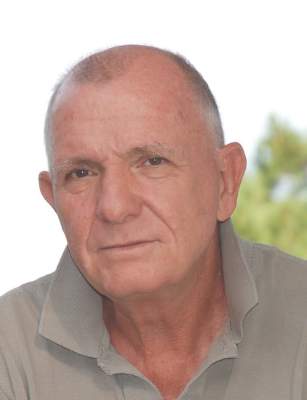User login
Progression to structural damage occurs slowly among patients with early axial spondyloarthritis and more often takes place in current smokers, HLAB27 carriers, and those with signs of inflammation on MRI, according to new observations from the French DESIR cohort study.
The findings help to establish risk factors for early progression of nonradiographic axial spondyloarthritis (nr-axSpA) to radiographic disease, said Dr. Maxime Dougados of the department of rheumatology at Cochin Hospital, Paris, and his colleagues (Arthritis Rheumatol. 2016 Mar 18. doi: 10.1002/art.39666).
The study involved 449 patients with recent-onset inflammatory back pain who were participating in the multicenter, longitudinal DESIR study and had x-rays available at baseline and 2-year follow-up.
A total of 16 (4.9%) out of 326 patients who did not fulfill the modified New York criteria (mNY) at baseline progressed from nonradiographic to radiographic axSpA over the 2-year study period.
Of the 123 patients who met the mNY criteria at baseline, 7 (5.7%) no longer met the criteria at follow-up.
Independent factors found to influence the odds of progressing to radiographic axSpA were smoking status (odds ratio, 3.3; 95% confidence interval, 1.0-11.5), HLAB27 positivity (OR, 12.6; 95% CI, 2.3-274), and the presence of inflammation at MRI in the sacroiliac joints (SIJs) at baseline (OR, 48.8; 95% CI, 9.3-904), a multivariate analysis showed.
However, when the authors defined radiographic progression as “a worsening of at least one grade in at least one SIJ,” HLAB27 positivity (OR, 1.68; 95% CI, 0.8-3.71, P = .02), MRI positivity (OR, 5.85; 95% CI, 2.38-15.37, P less than .001), and baseline structural damage at SIJs on pelvic x-rays (OR, 6.35; 95% CI, 2.14-18.88; P less than .001) were predictors of radiographic disease progression. Another analysis confirmed those as risk factors even when the definition of progression also required a final absolute grade of at least 2 in the worsened SIJs.
When the authors considered the change in total score (based on the mean of two readers), only HLAB27 positivity and baseline MRI positivity were highlighted as independent predictors of disease progression. In this analysis, HLAB27 positivity and inflammation on MRI had grading score increases of 0.41 (P = .014) and 1.03 (P less than .001), respectively.
Unlike other studies, the researchers did not see a clear relationship between abnormal C-reactive protein at baseline and radiographic progression.
The findings suggest that, in early SpA, “structural progression does exist but is quite small and observed in a small number of patients,” the study authors wrote.
The authors noted that their findings should be “interpreted with caution” because they were based on a small number of patients, and additional studies with a longer-follow-up period are needed to confirm the findings.
The DESIR cohort was sponsored by the Department de la recherché Clinique et du Development de l’Assistance Publique-Hopitaux de Paris. An unrestricted grant from Pfizer was allocated for the 10 years of follow-up.
Progression to structural damage occurs slowly among patients with early axial spondyloarthritis and more often takes place in current smokers, HLAB27 carriers, and those with signs of inflammation on MRI, according to new observations from the French DESIR cohort study.
The findings help to establish risk factors for early progression of nonradiographic axial spondyloarthritis (nr-axSpA) to radiographic disease, said Dr. Maxime Dougados of the department of rheumatology at Cochin Hospital, Paris, and his colleagues (Arthritis Rheumatol. 2016 Mar 18. doi: 10.1002/art.39666).
The study involved 449 patients with recent-onset inflammatory back pain who were participating in the multicenter, longitudinal DESIR study and had x-rays available at baseline and 2-year follow-up.
A total of 16 (4.9%) out of 326 patients who did not fulfill the modified New York criteria (mNY) at baseline progressed from nonradiographic to radiographic axSpA over the 2-year study period.
Of the 123 patients who met the mNY criteria at baseline, 7 (5.7%) no longer met the criteria at follow-up.
Independent factors found to influence the odds of progressing to radiographic axSpA were smoking status (odds ratio, 3.3; 95% confidence interval, 1.0-11.5), HLAB27 positivity (OR, 12.6; 95% CI, 2.3-274), and the presence of inflammation at MRI in the sacroiliac joints (SIJs) at baseline (OR, 48.8; 95% CI, 9.3-904), a multivariate analysis showed.
However, when the authors defined radiographic progression as “a worsening of at least one grade in at least one SIJ,” HLAB27 positivity (OR, 1.68; 95% CI, 0.8-3.71, P = .02), MRI positivity (OR, 5.85; 95% CI, 2.38-15.37, P less than .001), and baseline structural damage at SIJs on pelvic x-rays (OR, 6.35; 95% CI, 2.14-18.88; P less than .001) were predictors of radiographic disease progression. Another analysis confirmed those as risk factors even when the definition of progression also required a final absolute grade of at least 2 in the worsened SIJs.
When the authors considered the change in total score (based on the mean of two readers), only HLAB27 positivity and baseline MRI positivity were highlighted as independent predictors of disease progression. In this analysis, HLAB27 positivity and inflammation on MRI had grading score increases of 0.41 (P = .014) and 1.03 (P less than .001), respectively.
Unlike other studies, the researchers did not see a clear relationship between abnormal C-reactive protein at baseline and radiographic progression.
The findings suggest that, in early SpA, “structural progression does exist but is quite small and observed in a small number of patients,” the study authors wrote.
The authors noted that their findings should be “interpreted with caution” because they were based on a small number of patients, and additional studies with a longer-follow-up period are needed to confirm the findings.
The DESIR cohort was sponsored by the Department de la recherché Clinique et du Development de l’Assistance Publique-Hopitaux de Paris. An unrestricted grant from Pfizer was allocated for the 10 years of follow-up.
Progression to structural damage occurs slowly among patients with early axial spondyloarthritis and more often takes place in current smokers, HLAB27 carriers, and those with signs of inflammation on MRI, according to new observations from the French DESIR cohort study.
The findings help to establish risk factors for early progression of nonradiographic axial spondyloarthritis (nr-axSpA) to radiographic disease, said Dr. Maxime Dougados of the department of rheumatology at Cochin Hospital, Paris, and his colleagues (Arthritis Rheumatol. 2016 Mar 18. doi: 10.1002/art.39666).
The study involved 449 patients with recent-onset inflammatory back pain who were participating in the multicenter, longitudinal DESIR study and had x-rays available at baseline and 2-year follow-up.
A total of 16 (4.9%) out of 326 patients who did not fulfill the modified New York criteria (mNY) at baseline progressed from nonradiographic to radiographic axSpA over the 2-year study period.
Of the 123 patients who met the mNY criteria at baseline, 7 (5.7%) no longer met the criteria at follow-up.
Independent factors found to influence the odds of progressing to radiographic axSpA were smoking status (odds ratio, 3.3; 95% confidence interval, 1.0-11.5), HLAB27 positivity (OR, 12.6; 95% CI, 2.3-274), and the presence of inflammation at MRI in the sacroiliac joints (SIJs) at baseline (OR, 48.8; 95% CI, 9.3-904), a multivariate analysis showed.
However, when the authors defined radiographic progression as “a worsening of at least one grade in at least one SIJ,” HLAB27 positivity (OR, 1.68; 95% CI, 0.8-3.71, P = .02), MRI positivity (OR, 5.85; 95% CI, 2.38-15.37, P less than .001), and baseline structural damage at SIJs on pelvic x-rays (OR, 6.35; 95% CI, 2.14-18.88; P less than .001) were predictors of radiographic disease progression. Another analysis confirmed those as risk factors even when the definition of progression also required a final absolute grade of at least 2 in the worsened SIJs.
When the authors considered the change in total score (based on the mean of two readers), only HLAB27 positivity and baseline MRI positivity were highlighted as independent predictors of disease progression. In this analysis, HLAB27 positivity and inflammation on MRI had grading score increases of 0.41 (P = .014) and 1.03 (P less than .001), respectively.
Unlike other studies, the researchers did not see a clear relationship between abnormal C-reactive protein at baseline and radiographic progression.
The findings suggest that, in early SpA, “structural progression does exist but is quite small and observed in a small number of patients,” the study authors wrote.
The authors noted that their findings should be “interpreted with caution” because they were based on a small number of patients, and additional studies with a longer-follow-up period are needed to confirm the findings.
The DESIR cohort was sponsored by the Department de la recherché Clinique et du Development de l’Assistance Publique-Hopitaux de Paris. An unrestricted grant from Pfizer was allocated for the 10 years of follow-up.
FROM ARTHRITIS & RHEUMATOLOGY
Key clinical point: The switch from nonradiographic to radiographic axSpA, made by about 5% of patients over the 2-year study period, was influenced by HLAB27 positivity, smoking status, and inflammatory sacroiliac joint lesions on MRI.
Major finding: Multivariate analysis showed smoking status (OR, 3.3; 95% CI, 1.0-11.5), HLAB27 positivity (OR, 12.6; 95% CI, 2.3-274), and the presence of inflammation at MRI in the sacroiliac joints (SIJ) at baseline (OR, 48.8; 95% CI, 9.3-904) predicted progression.
Data source: An analysis of 2-year data from 449 patients with recent-onset inflammatory back pain participating in the multicenter, longitudinal DESIR study.
Disclosures: The DESIR cohort was sponsored by the Department de la recherché Clinique et du Development de l’Assistance Publique-Hopitaux de Paris. An unrestricted grant from Pfizer was allocated for the 10 years of follow-up.

